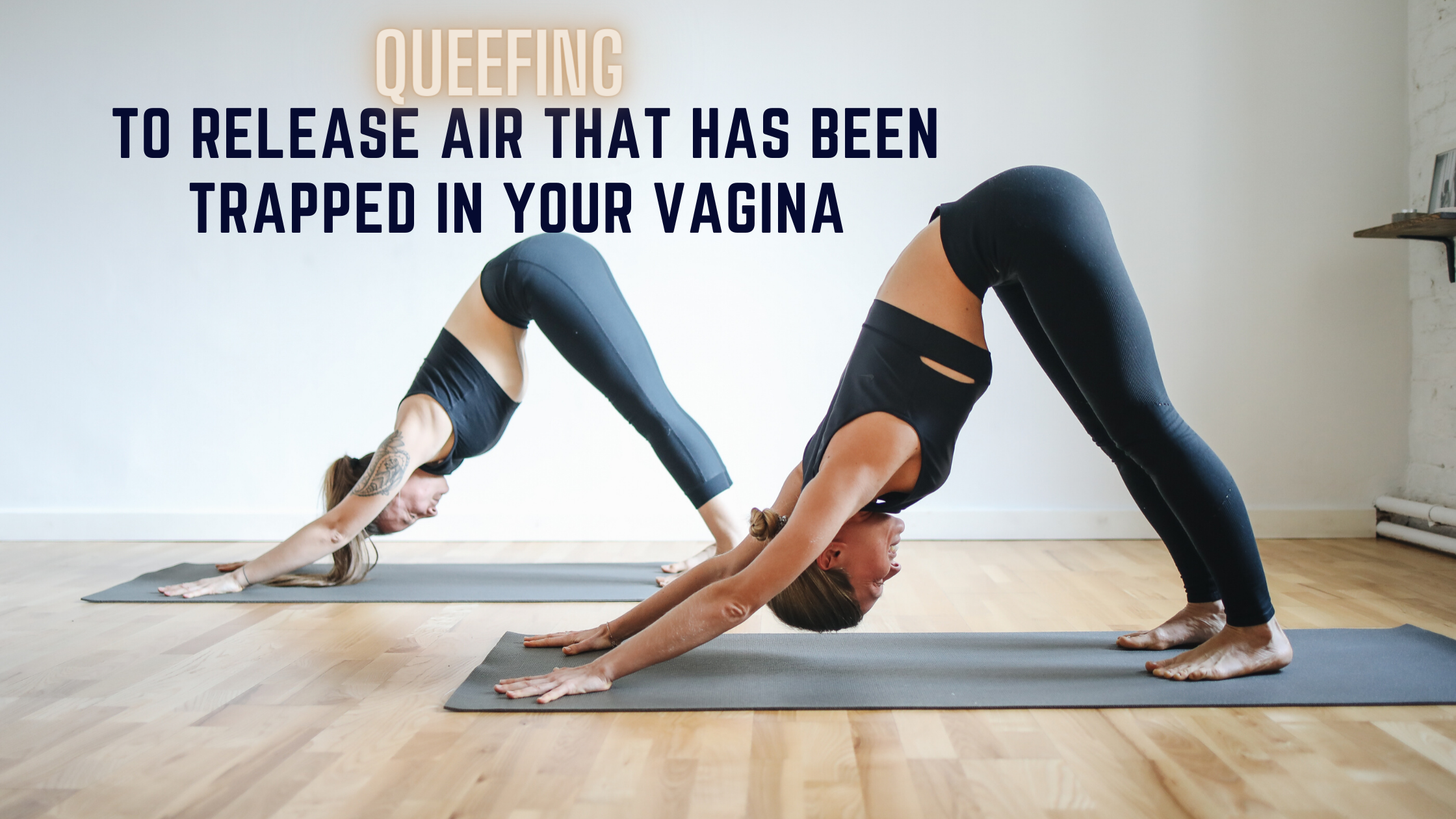“Why do I queef when I work out?”
“Why do I queef after sex?”
“Why does my vagina feel like it’s farting?”
“My vagina farted during yoga class so now I can never go back.”
What is queefing and why does it happen?
To Queef:: to release air that has been trapped in your vagina
Queefing is pretty common whenever our bottoms are higher up than our backs (aka we are inverted) or our pelvic floors are on stretch. Queefing can happen during a bridge, downward dog, or even during/after sex. It can also be whenever our pelvic floor muscles are stretched such as a sumo squat, happy baby, deep squat or even a hip hinge. The first thing to know is that queefing on its own does not mean something is wrong! It simply means there was a gas trapped in your vagina and it made its way to the outside. Queefing can be more common in people who have a prolapse so if you find yourself queefing all the time, it’s a great idea to get checked out by a pelvic floor provider.
Ok, so let’s talk about the elephant in the room- embarrassment. It may be a little awkward/uncomfortable if you find yourself queefing during yoga class, but
How can I stop queefing?
So this one is tricky because we are all different. The key is to find what works for you! Below are some common things you can look at whether it is during a squat or an inversion. Sometimes we also feel like our vaginas are flapping in the wind and open, if that’s you try these and see what makes you feel most supported. Play around, experiment, see what works for you and remember that queefing and openness does not equal harm.
Find your neutral spine. We each have a position that we feel most stable in and I call this a neutral range. Try to find your neutral by doing the same movement with a little more anterior pelvic tilt (think J-Lo booty) or more posterior pelvic tilt (tuck the butt a little). Are your rib cage and pelvic floor relatively stacked? Usually in the neutral position we can take a deeper and more full breath without feeling like we are using a lot of exertion. Which position do you feel like you are most stable?
How are you breathing? Try to do a full inhale and then move. Try again and this time inhale during the movement. Try again but this time inhale, slightly exhale and move again. You can even try to exhale slowly through the entire movement. Finally, inhale, say a long “chhhh” like you are going to say “cheese” and then move. Do you notice more support, increased pelvic floor activity or less queefing in any of these positions? If so, utilize those breathing strategies during the movements.
Change your hip position/stance. This one is more applicable to the squat and deadlifts/good morning/hip hinge but if you notice queefing you can try to change the position of your stance. Experiment and see what feels right for you—sumo stance vs standard stance vs narrow stance, slight internal rotation of the femurs vs. slight external rotation of the femurs, dorsiflexion (foot towards head) vs plantar flexion (foot away from head). All of these movements can change the activation of the pelvic floor and can help reduce queefing.
If you notice queefing with glute bridges or downward dogs, you can make the same changes or you can add a small exercise ball between your knees and band around your knees. Play around with different positions to see what works best for you.If you notice your queefing mostly after sex, change up your position. Often times doggy style isn't as forgiving to the queef as missionary. You can also change how your legs are positioned. One option that many find helpful is by placing their knees wide and their feet together (think butterfly stretch). This naturally contacts the pelvic floor and doesn't allow as much air to enter.
Experiment with both progressions and regressions. I love working on a deadbug or bird dog while rocking back and forth or even happy baby in order to better train a squat. A box squat may also be beneficial while you are training your pelvic floor as it can be slower and more focused. Sometimes we need to regress and build so we can progress in the future. You can also add a little load to increase the natural tension of the body and help activate the core and pelvic floor. Often times we actually need to progress and challenge the system so we can come back and do the regressions better.
Ask for help! There are a lot of reasons someone may queef. When we are resting our vaginal flaps should be closed and after childbirth those little flaps may be open a little more. Queefing could be related to pelvic floor strength, ability to relax, or coordination. There is no “right way” or “best way” to exercise when you are queefing. There isn’t one solution that be best. We are all unique and the best thing to do is figure out what is right for you!
